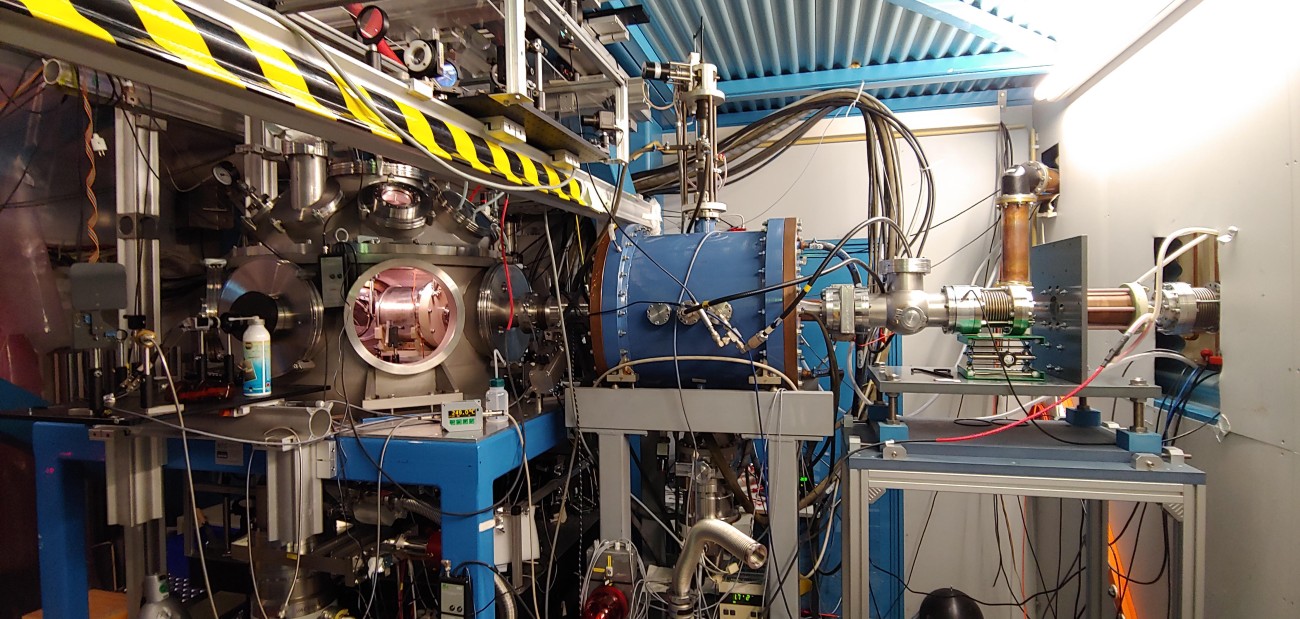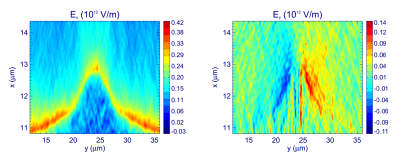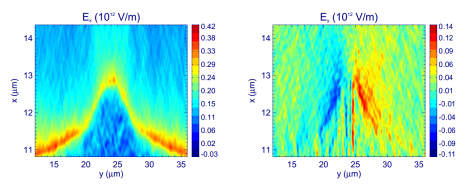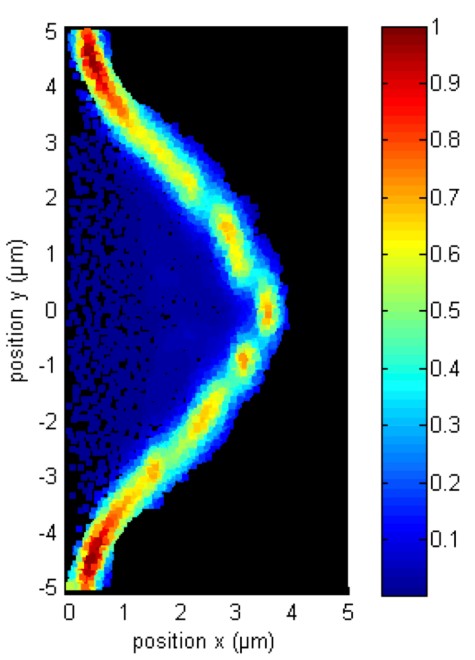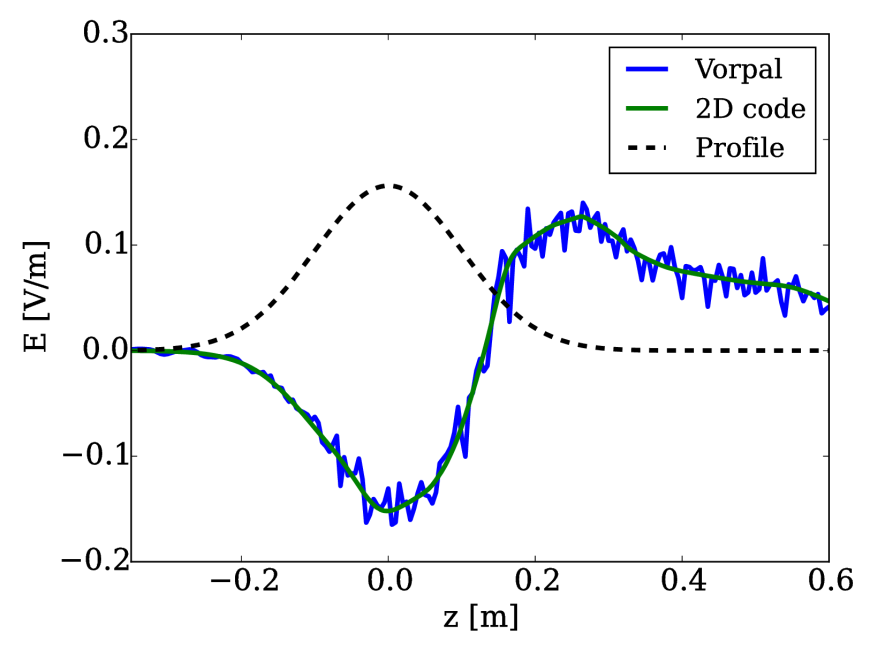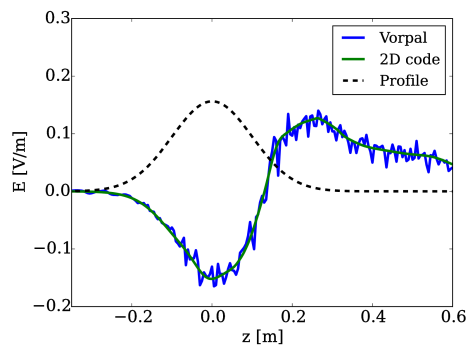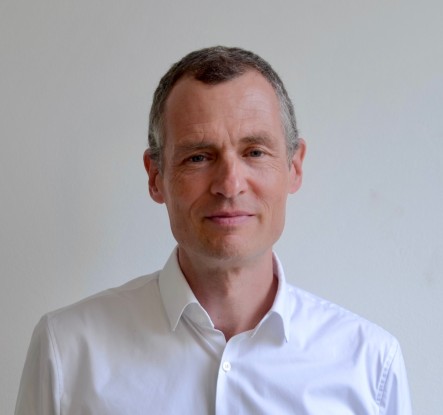Further information about LIGHT
Here you can find further information about the LIGHT collaboration of the GSI Helmholtz Centre.
Here, a laser hits a thin foil, which is immediately ionised. The electrons leave the material much faster than the much heavier ions, thus creating a strong space charge field. A thin layer of impurities on the foil, consisting of protons among other things, is accelerated in this space charge field. The acceleration takes place in a μm range behind the target. Injecting this beam into an ordinary periodic focussing structure (m-range) is a multi-scale problem, which can only be simulated with different, separate codes in independent space and time scales. At the department, the simulation tool VSim from the company Tech-X is used for this purpose, among others.

